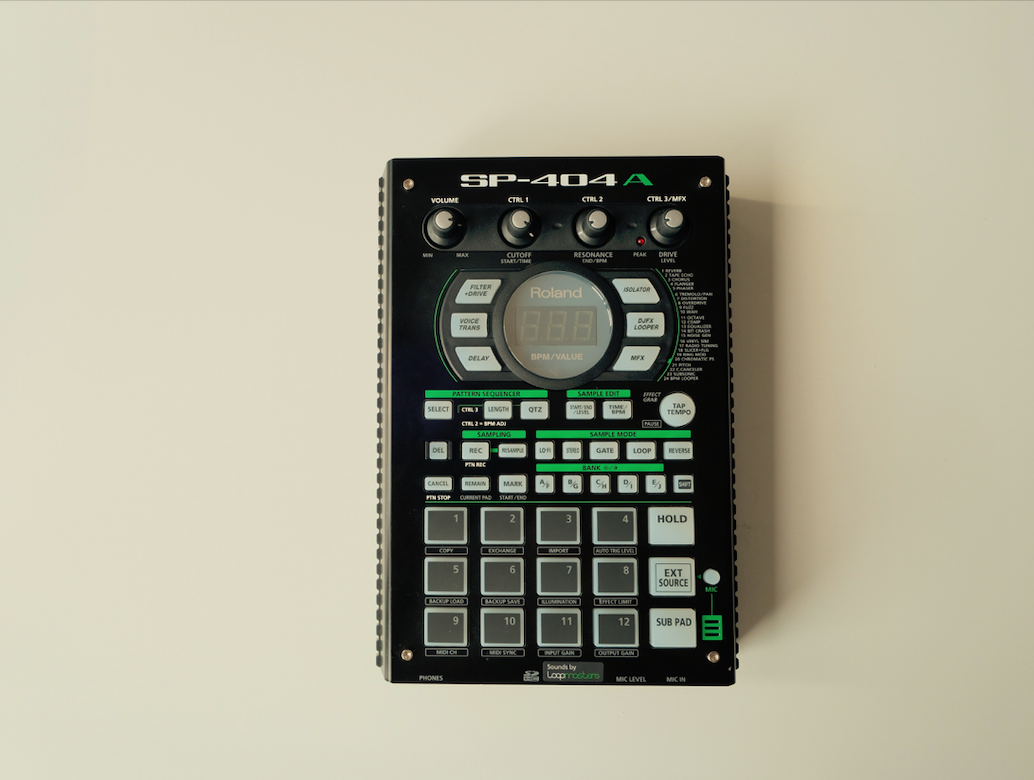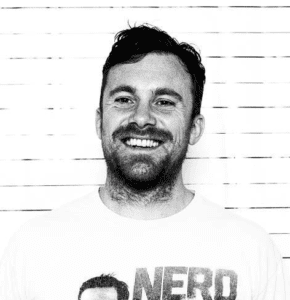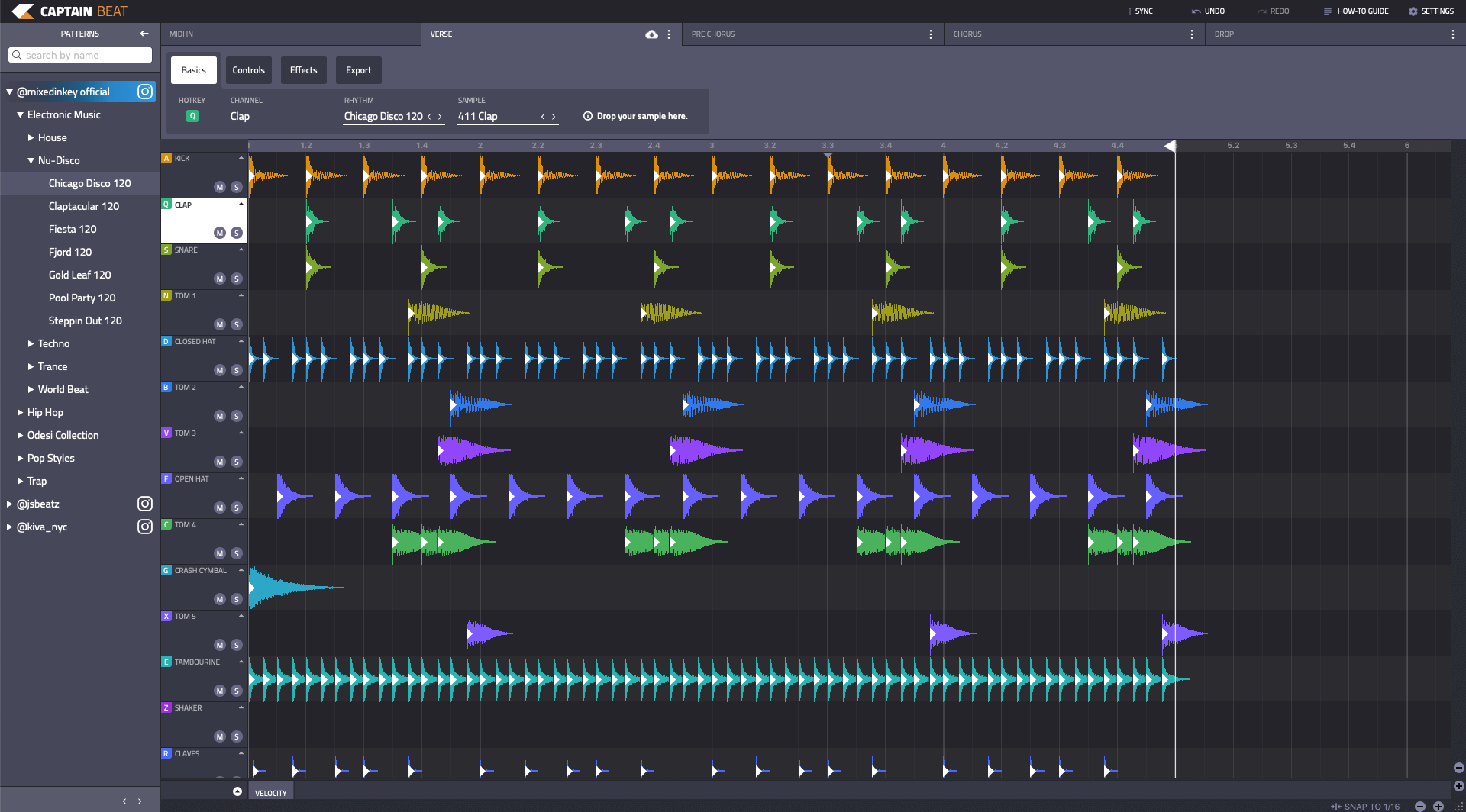Beat-making Equipment.
 Photo by Ricardo Abreu on Unsplash
Photo by Ricardo Abreu on Unsplash
There are many ways to skin a cat, and even more to make a beat. With a huge and diverse array of hardware and software methods for beat-making, how do you choose?
If you’re looking to get started, or considering your options for new beat-making equipment, this guide is for you.
Dance to the beat of a different drum machine.
Captain Beat 5.0: The Ultra-Modern Beatmaking Plugin
- Mix and match rhythm patterns per-channel
- Hundreds of high-quality drum sounds
- Play and record rhythms with computer keyboard or MIDI controller
- Sophisticated MIDI editing
- Add your own samples
- Wave-form visualizer
- Advanced audio and MIDI export options
What is a beat?
Let’s get the obvious questions out of the way first. A beat is different to a track or a song. But why?
The term ‘beat’ is most commonly used in Hip-Hop and Trap circles to describe a loop or collection of loops, upon which a vocalist or rapper can get busy. A beat might have a definitive verse and chorus, but it’s unlikely to be fleshed out as a full arrangement. It’s also likely to be instrumental. A beat is also a term that defines something which is predominantly drums, or predomnantly driven by drums. Since most beat-makers are looking to sell their beats or attract vocalist collabs, they’ll usually take care to present it as a fully viable package for vocal use. That means, they’ll probably have bass and melodic instruments adding depth and flavor.
It’s not about making ‘half a song’, it’s more about giving would-be collaborators space to apply their own work.
But, since we’re talking beat-making, we’ll focus on the tools for making killer drums, with the caveat that many tools allow additional composition in the same package.
Hardware or software?
Back in the day, hardware was the de facto choice of pro beat-makers. From Akai’s MPC range to Roland’s SP, Groovebox and Rhythm Composer series, Yamaha’s TG-33, Atari or Boss’ Dr Rhythm models, beats were made on solid devices.
Digital pioneers.
Enter Cubase, Reason and the advent of software-based drum machines. These were much cheaper, had fewer limitations and allowed a more comprehensive ‘full composition’ application. This new method became known as the ‘in the box’ approach – making music without leaving your computer. But, there was a problem; the early models all sounded a little too digital. Their hardware counterparts oozed character, which is something software developers have been attempting to emulate ever since.
The 2020 club.
History lesson aside, today’s producers can rest assured; today’s software options are a world away from their crude ancestors. In short, the market is full of killer beat-making equipment, both hardware and software.
NB – no disparagement to Cubase or Reason intended – they were pioneers who still make professional-grade DAW software, every bit as good as any competitor.

It comes down to what feels right, what you value, and what you can afford. For some, stepping away from the computer is beneficial, as suddenly you’re focused on one particular device, not a hub full of distractions and temptations. Or, it may be a case that you just prefer inputting beats on a step-sequencer than on drum pads.
Equally, the idea of plugging in, MIDI-syncing and audio-routing a hardware device might seem an unnecessary extra step in the beat-making process. It’s going to boil down to what works best for you, in the end. The best way to decide is to try as many different methods as possible.
Types of sequencer:
Electronic drum beats are created as sequences – that’s the point in a beat-grid at which each drum in your pattern registers a shot. You may then want to adjust velocity (how hard the drum hits), swing/groove (how human the drum beat sounds), or articulation such as modulation effects, trigger types and more. This can all assist in the creation of an interesting, satisfying drum beat.
In order to create such sequences, we need to use a sequencer. There are 2 main types:
- Step-Sequencer.
- Grid-sequencer.
As seen in classic models like the Roland TR-808, this method involves punching in drum hits as a ‘step’ in a sequence. You program each drum channel separately.
Based on the MPC style of 16 pads, each holding a drum sound. Drum hits can be recorded in live polyphonically (as in, you can hit multiple pads to trigger sounds simultaneously) or sound by sound. This method traditionally favored more organic, human musical styles like Hip-Hop, due to its predisposition for turning out swung, groovy beats.
Software/hardware hybrids:
The in the box/out the box argument has been raging for years, and while some are staunch advocates of one or the other, many more value compromise. For example, NI Maschine or Ableton Push users can get the hands-on, tactile workflow of an AKAI MPC, with all the trimmings of a full DAW. The best of both worlds, many passionately agree.
Indeed, with the capability of modern computers and moderns DAWs, it can be argued that the only real advantage of hardware devices is their tactility. But what an advantage that is!
Many producers now use the aforementioned, or AKAI’s MPD range, Arturia’s Beatstep/Keystep or Spark or Novation’s Launchpad series as fully tactile MIDI controllers for their VST Drum plugins. This is supremely cost-effective way of achieving physical drum programming with the benefits that come with DAW-based beat-making.
3rd-party or stock VST Drums?

As DAWs get ever more powerful, with superb programming staff and years of experience, it can make you wonder why you’d need to bother with the additional expense of 3rd-party drum plugins.
Perhaps there will come a day when a DAW’s stock drum plugins out-rank all 3rd-party options, but for me, that day is yet to arrive. The stock plugins from Logic Pro X, Bitwig and FL Studio are outrageously good. But there’s a reason purpose-built 3rd-party Drum Plugins are so popular. Usually, there will be little additions that stand out from the competition, an improved workflow or a sleeker design. This may include factors like the realistic articulation options in NI Battery 4, or the per-channel rhythm susbtitution in Captain Beat. Indeed, Captain Beat also has a unique Fill tool, with over 40 customisable drum fills that can be added to any drum pattern.
Consider genre.
While it shouldn’t be the only factor, the genre you want to make should play a part in your beat-maing equipment selection. The equipment you choose may well be predisposed to perform better with samples, such as NI Maschine, Ableton’s Drum Rack or NI Battery 4. Alternatively, perhaps it’s killer preset rhythms and drum kits you’re after, in which case Captain Beat or XLN Audio’s XO could be a better choice. If it’s classic emulations you need, Roland Cloud offers all their classic drum machines in one easy to manage account. Meanwhile if it’s crazy bleeps and unpredictable modulations that float your boat, FXPansion’s Geist, Arturia’s Spark or Izotope’s Breaktweaker would make great options. Ultimately, it’s likely that any of these tools would be great for you, since they’re all pro-grade, powerful tools. But bear in mind what you intend to create and you might find whittling down the competition a little easier!
Try as many options as possible.
In these strange times, going to your local store may not be possible. However, any opportunities you can take to try different styles of hardware and software beat-making equipment should be snapped up. After all, it’s hard to know what feels right if you haven’t tested it. Fortunately, many plugin manufacturers offer trial modes, or, like Captain Beat, a 30-day moneyback guarantee. You can test it, see how it feels, and decide if its the one for you!
About the author:

